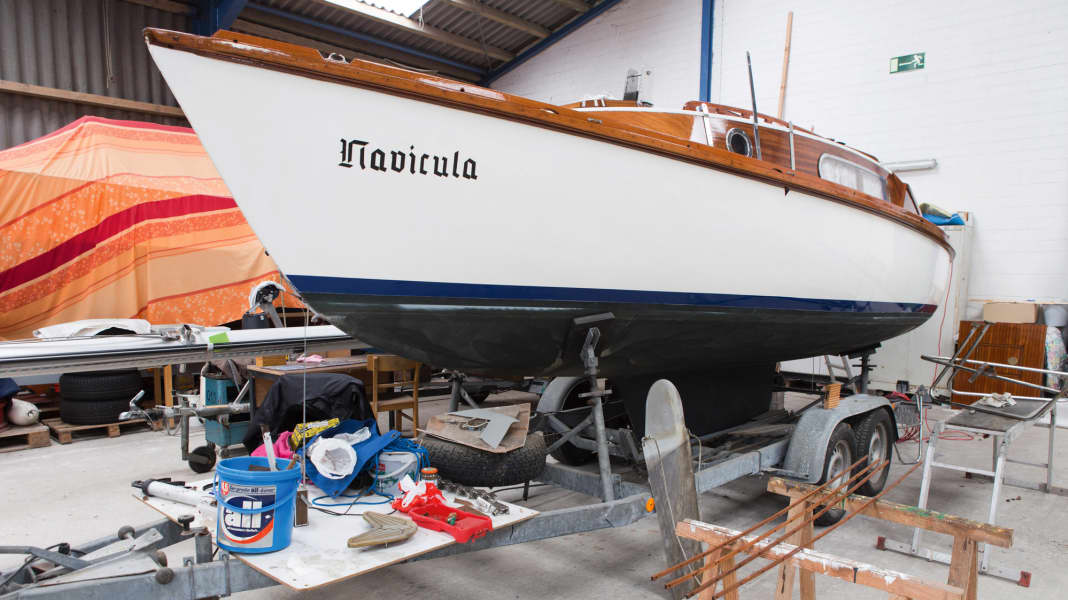
This tool should be available in the home workshop:
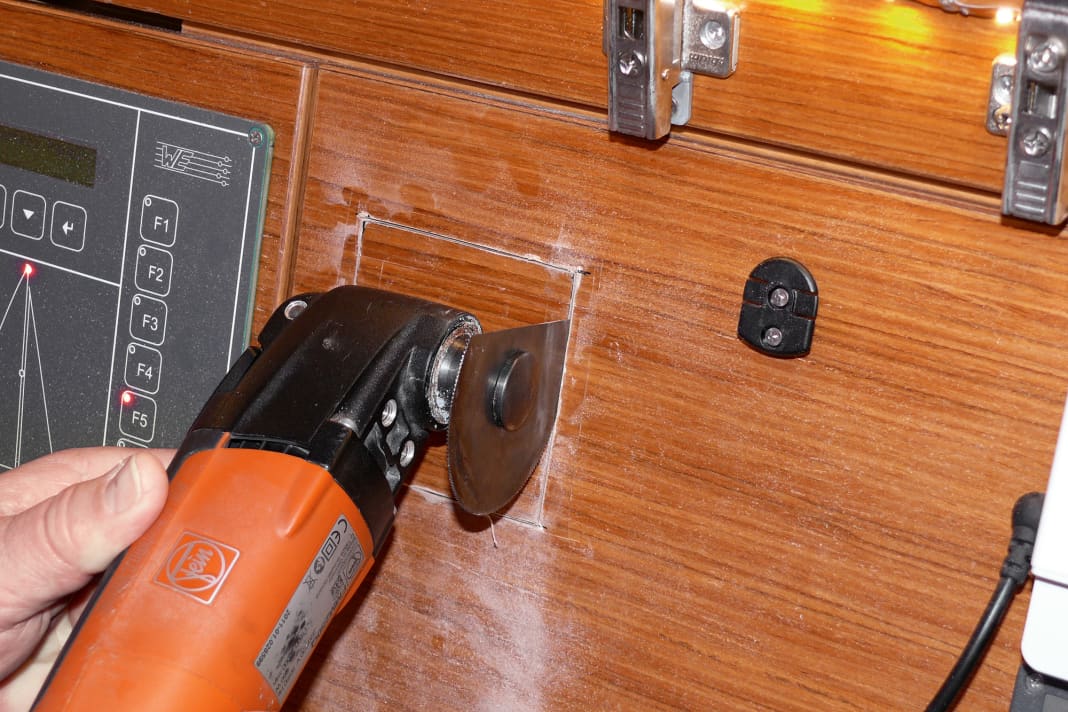





The ideal tools for on-board work in winter storage: which electrical appliances should be in every toolbox and what to consider when selecting machines
A drill or cordless drill can be found in practically every household; if you like DIY, you probably also have a jigsaw, a grinder and an angle grinder in your stash. In winter, the machines simply go with the boat. However, what works well in the garage or cellar is sometimes overtaxed when working on the boat. Not only do much larger areas have to be worked on, but when sanding, you also have to deal with stubborn materials such as GRP or old underwater paintwork. The miserable struggle with small and underpowered devices can be observed in practically every winter storage hall, often coupled with inadequate extraction. This is not only detrimental to health, but the lack of progress is also extremely frustrating.
Which machines are useful and necessary depends on the intended work and the amount of material. To retrofit a few coat hooks below deck or stir the antifouling in a can, you don't really even need a machine. The same applies when applying a sealant to new gelcoat. But even these jobs are quicker and easier with engine power.
As our survey of new and used GRP boat owners and master boat builders makes clear, the equipment considered necessary varies. Or as our colleague Lars Bolle summarises: "With my wooden dinghy cruiser, I actually used all the tools in the winter. For the new plastic boat, a cordless screwdriver and a polishing machine have been enough so far."
At the top of the list is the cordless screwdriver
The ranking of tools, on the other hand, is almost identical. All respondents put the cordless drill in first place, followed by a grinding or polishing machine, an industrial vacuum cleaner and saws. Also in the top places: Gloves, lighting, cable drums and accessories such as a foldable workbench.
The crux of the matter is that the market for cordless drills is more than confusing. Small or large, brushless or with a conventional motor, one or up to four gears are offered by practically all manufacturers. There are also special functions such as impact drilling or impact screws. The price differences are correspondingly large. From around 30 euros to well over 400 euros can be invested.
The situation is similar for sanders, except that there are also different methods such as rotary, eccentric, orbital or belt sanders to choose from, each type again in several sizes and capacities. The top models break the 700 euro mark even without accessories, while a simple model costs between 40 and 100 euros, depending on the size.
If you choose from the top shelf for all appliances, you can be sure that you will not reach the performance limits of your machinery, even for demanding refit work. However, they also have to invest several thousand euros. A significantly smaller budget is sufficient with an equipment selection that is customised to actual requirements.
This raises the question of which tools should be included in every toolbox as basic equipment and how to choose the right type, size and performance class. To make the decision easier, we have compiled tried and tested selection criteria for the most important types of tools for winter and on-board use.
Drilling & screwing on board
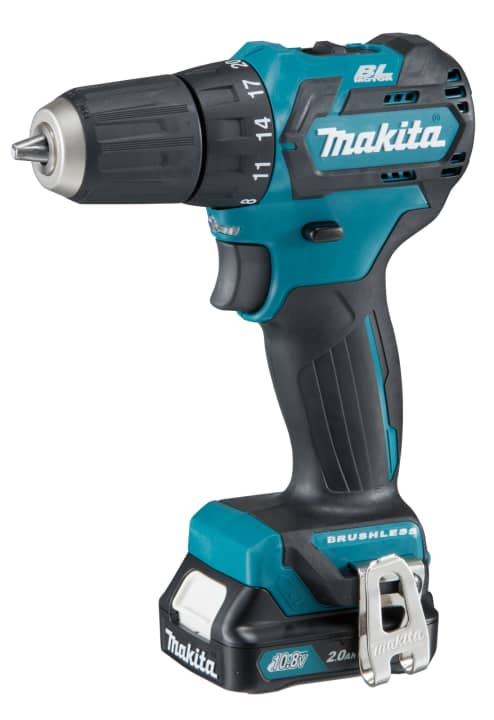
Whether you are a professional or amateur boat builder or a DIY enthusiast, if you need a hole in your boat, you reach for an electric drill. At the same time, the machine is used relatively little during normal winter storage. Unless all the screws in the teak deck are to be drilled out in one day or you are working with large hole saws, a simple model is sufficient. On the other hand, a power reserve does no harm, and a high-quality cordless screwdriver is a long-term investment. As long as the machine does not fall off the ladder while working, the battery life is the weak point.
However, this is quite considerable, at least for branded appliances. Even after around eight years of mixed use, our 18-volt drill driver from the Bosch Professional series shows no recognisable loss of performance. And at least for the time being, a suitable replacement battery can be easily purchased. This may be an argument in favour of a branded appliance. However, as energy storage systems are constantly being further developed, this cannot be guaranteed for the future.
Battery quality is crucial
Whether the machine actually delivers the promised power depends on the quality of the battery. The internal resistance is decisive, as it determines the maximum current output capacity of the energy storage device. Unfortunately, this characteristic cannot be recognised from the outside or from the manufacturer's specifications. There is a great risk of buying a pig in a poke, especially with particularly cheap offers, as the manufacturer can easily save money with low-performance cells.
Particularly insidious: The internal resistance of batteries increases with decreasing temperature and age. New and in a warm hobby cellar, a tightly designed machine may work well; in cold winter storage, on the other hand, it quickly comes to its knees. The charging time can be an indication of cells with low internal resistance: Batteries that can be charged in an hour or less are generally fitted with high-performance cells.
Cordless screwdriver: 10.8 volts, 14.4 volts or 18 volts?
The system voltage is also an issue. It is often used to categorise devices. Basically, the higher the voltage, the more power the battery delivers for the same current, and the more power the screwdriver has. Common voltages are 10.8 volts, 14.4 volts and 18 volts, depending on whether three-, four- or five-cell batteries are used.
In terms of maximum drilling performance, an 18-volt model naturally has an advantage over a 10.8-volt version, as the battery delivers around 60 per cent more power. In practice, however, this additional power is not needed very often. On the other hand, the 10.8 volt machines are generally much smaller and easier to handle, which is an advantage in hard-to-reach places.
If you are looking for a particularly compact and powerful device, a so-called brushless motor is a must. In these motors, the coils are not supplied with power via a mechanical collector system and carbon brushes, but are controlled electronically. This results in fewer losses and the motors are smaller and lighter. In addition, better magnet material is often used, which significantly increases efficiency. In the meantime, brushless technology is no longer reserved for the top models, but is also available in drill drivers in the 10.8 volt class. These little machines achieve outputs that until recently were only common in the 18-volt league.
What you should look out for in a cordless screwdriver
- Drill chuck
A clamping range between 1.5 and 13 millimetres is well suited. The chuck should have a locking mechanism so that the tool does not come loose when changing the direction of rotation. Check concentricity and play - Torque I
Two values are usually given. As there is no standardised measurement method, they can only serve as a guide. Between 15 and 30 Newton metres "soft" are suitable for on-board use - Torque II
A well-functioning torque limiter protects screws and tools. In the top models, the force control is partly electronic and therefore particularly sensitive - Tension
The higher the value, the more power the battery can deliver. Typical values are 10.8 volts, 14.4 volts and 18 volts. Specifications such as 12 volts or 20 volts are merely rounded up cell voltages - Speed & gearbox
A range of 100 to around 2,000 revolutions is suitable for the usual drilling diameters of 2 to 12 millimetres in wood, stainless steel and GRP. The machine should have a slow gear for screwing - Engine
Conventional or brushless is a question of budget and desired performance. Brushless models are more compact but more expensive. Check the starting behaviour, the machine should not jerk - Capacity
A large battery makes the machine more unwieldy. For screwing and drilling, 2 to 4 ampere hours are sufficient. If the battery is also to power a grinder or saw, a higher capacity is better
Grinders for the sailing yacht
Most projects can be mastered with a powerful random orbital sander
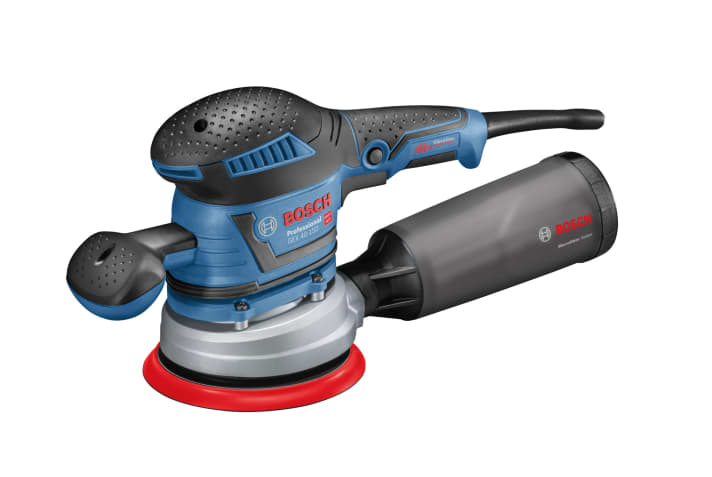
The spectrum of sanding work on the boat ranges from polishing to fine intermediate sanding when painting and levelling a teak deck to really rough work on the underwater hull when it comes to removing the old fouling protection or smoothing epoxy filler and fibreglass laminate.
The tool trade offers special devices for each of these activities; in practice, however, an orbital sander is often sufficient. With sufficient power and the right abrasive, the random orbital sander is practically the jack-of-all-trades among sanders. With this type of machine, the sanding disc moves in small circles and therefore rotates more slowly, resulting in a very even sanding pattern; the device is also easy to guide. The path of the small circles is determined by the stroke of the eccentric; the smaller the stroke, the finer the sanding pattern. For standard boat work, this should be around five millimetres.
Machines in which the disc is actively rotated by the motor deliver significantly more material removal. The best-known representative with such a forced drive is the "Rotex" from Festool, similar systems are also available as "Turbo" from Bosch or simply as "Eccentric/rotary sander" from Makita. The switchable rotary movement is intended for coarse sanding and is extremely effective, but also makes the machines heavier. Depending on the offer, the geared eccentrics cost around 70 per cent more.
150 mm sanding disc ideal for most jobs
A 150 mm disc should be selected for the sanding disc. Larger areas usually need to be sanded on deck or on the underwater hull, in which case the large disc ensures faster work progress. Craftsmen and boat builders also work with 150-grit machines, which is why the selection of professional abrasives for these devices is the largest. These not only have a significantly longer service life than DIY products from the DIY store, they are also much cheaper in packs of 50 or 100.
The weight ranges from around one kilogramme to 2.6 kilogrammes. This does not matter on horizontal surfaces. On the contrary: the additional weight helps with sanding and dampens vibrations. However, as soon as you have to work on vertical surfaces or overhead, such as on the underwater hull, every gram is a hindrance.
In contrast to drilling or sawing, cordless tools are less suitable as the main sanding machine. The motor power and the usual continuous use require large and therefore heavy and expensive energy storage units. And the machine is usually attached to the hoover hose anyway.
What you should look out for in a grinder
- Performance
For pure eccentrics with 150 discs: at least 350 watts. Appliances with a rotation function need double the power - or more - Balance
Good weight distribution helps with horizontal work. It does not play a major role on the dropside, where flat-built machines have an advantage - Stroke
For boat use, values of around 5 millimetres are good. With 320-grit paper, the varnish can be sanded fine enough, and with 80-grit paper, the removal is also sufficient for coarse sanding - Plate size
Models with 150-millimetre discs are ideal for standard boat surfaces. There is also the largest selection of professional abrasives for these machines - Suction
Directly attached collection containers are practical for small and flat surfaces, but can quickly become overloaded. A suitable industrial vacuum cleaner should be used on the boat (see below) - Convenient cable
Extraction hoses with integrated cable routing are available for Festool and Mirka tools. This makes working much more comfortable. The soft outer surface also protects against scratches from the hose - Particularly light
Eccentrics with brushless motors, such as the one from Mirka, weigh half as much as other models - a blessing for overhead work - Also for the rough stuff
Machines with switchable forced rotation deliver much more stock removal and are also better suited for polishing - Universal supplement
Oscillating tools such as the Multimaster from Fein are extremely versatile. The YACHT test revealed extreme differences in the quality of the accessories of the cheaper devices. Therefore, ensure compatibility with a brand manufacturer
Polishing a sailing boat
Older gelcoat can hardly be refurbished without a specialised machine. Performance and smooth running must be right
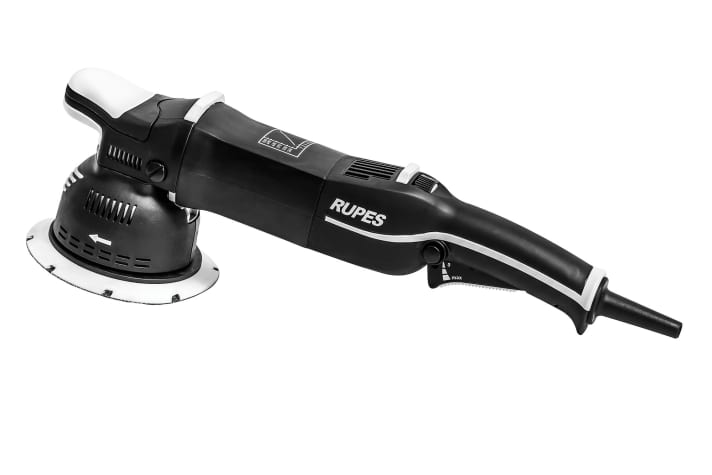
Rotary or eccentric machines are ideal for polishing. The former work like an angle grinder, but rotate much more slowly. They can deliver very high removal rates and are generally used by professionals. There are big differences in price - but also in smoothness and power. With rotary polishers, you have to constantly work against the torque of the disc. Poorly controlled motors with fluctuating speed intensify the effect, which costs power. Eccentric polishers work in the same way as the grinder of the same name and are easier to guide. The disc of the polisher moves with a stroke of up to 21 millimetres, which is significantly more than with a random orbital sander. The removal rate is therefore also higher. Nevertheless, the random orbital polishers do not achieve the polishing performance of a rotary machine. The easier handling partially compensates for the increased time required for private users.
What you should look out for in a grinder
- Speed
The speed range of rotary polishers should be at least 800 to 1,400 revolutions. Around 1,000 watts is the entry-level power. Eccentric polishers do not require quite as much power, but rotate at around twice the speed. The weight should be as light as possible
Hoover for working on the boat
A vacuum cleaner with a suitable filter system protects health, keeps the workplace clean and extends the service life of the abrasives
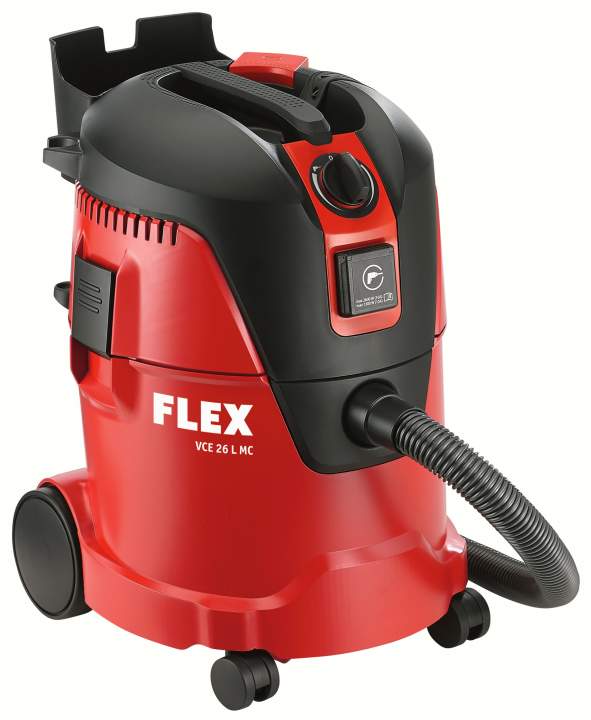
The use of electrical appliances inevitably produces dirt. Drilling or sawing chips can be disposed of with a hand brush, but when sanding at the latest, there is no way around an extraction system. This is because the dust not only clogs the abrasives, it is also anything but healthy. The dust extraction systems fitted to many machines are only suitable for small and flat surfaces. External removal of the sanding dust using a vacuum cleaner is much more effective. This depends on the efficiency of the filter system. For professional appliances, the dust class is specified as L, M or H. It is based on the percentage of dust separated in the filter and the substances it contains. Class L vacuum cleaners may only allow a maximum of 1 per cent of the dust to pass through the filter; in class M, only 0.1 per cent of the dust may pass through the filter.
The limit values are not binding for private users, but should be observed in the interests of your own health. This means that at least a class L filter system is required. For sanding woods such as beech and oak or antifouling, it should be class M. However, it is worth taking a look at the technical data, sometimes a device is not categorised in the higher class, even though the filter technology is powerful enough. A cleaning function for the filter is only helpful when working without a bag.
What you should look out for in a hoover
- Remote control
The Cordless Control system from Metabo fits all vacuum cleaners. A vibration sensor on the hose switches the device on and off - ideal for cordless tools - System vacuum cleaner
When vacuum cleaners and tools come from one manufacturer, the connections, suction power and accessories fit together perfectly. These solutions are convenient, but also expensive - Filters & bags
At least 99 per cent of the dust should be filtered, which corresponds to class L. Some vacuum cleaners achieve this without a bag. However, these are useful as they keep the appliance clean and make disposal easier - Volume
Models with a container volume of between 20 and 26 litres are sufficient for normal use. As the filter and bag take up space, the actual usable suction volume is often significantly less - Regulation
Limiting the suction power is not absolutely necessary, but can be practical if the sanding machine threatens to get stuck on the surface during fine sanding - Cable plug
When working with corded machines, the vacuum cleaner switches off automatically. After switching off, the vacuum cleaner should continue to vacuum for a few seconds to empty the hose - Accessories
An extra-long hose makes working with sanders much easier. A round brush is also very practical. Universal adapters are available for connecting to different electrical appliances
Occupational safety in the Heim shipyard
Electrics, protective equipment, lighting - useful information for the weekend boatyard
Power tools are helpful to make work easier in winter storage. In most indoor or outdoor storage facilities, however, there is also a lack of basic things - such as a workbench with a clamping device, sufficient lighting or a power supply. As a rule, extension cables have to be used. Such flying electrics are literally a fire hazard in the event of defects or overloading. Therefore, only use cable reels specified for the total power of all connected devices. To prevent heat build-up, the cables must be completely unwound. Plug connections are a risk. After a few winter seasons, the couplings are sometimes corroded. This increases the contact resistance and the connection can heat up considerably. In this case, a replacement must be procured immediately.
Health protection is important when sanding, polishing or painting. This not only includes consistent extraction, but also personal equipment in the form of painter's suits, respiratory protection with dust or gas filters, safety goggles, hearing protection and gloves. While solvent resistance is the top priority for painting work, so-called assembly gloves are ideal for many other activities. They are not waterproof, but have a good grip and prevent cold fingers.

